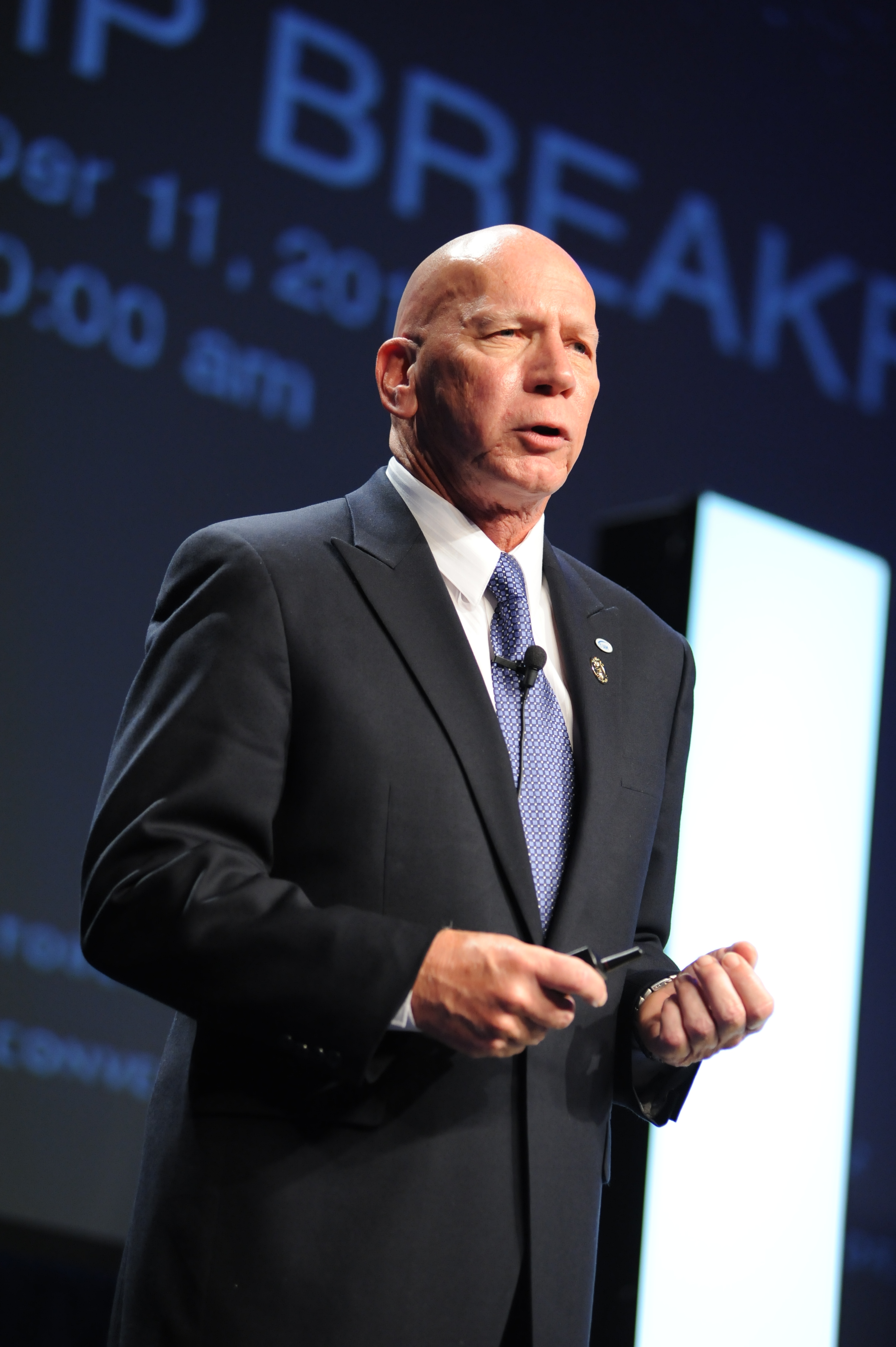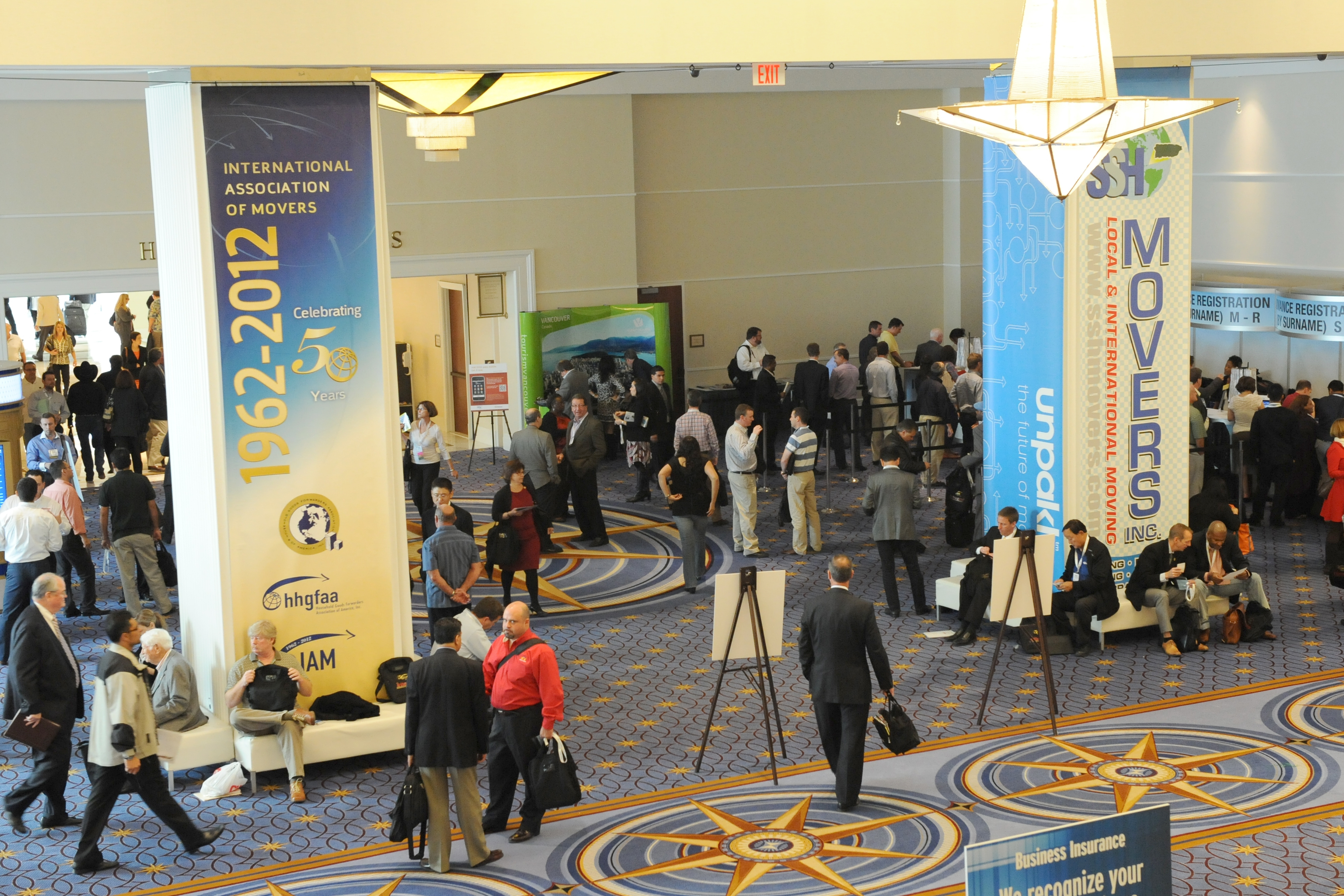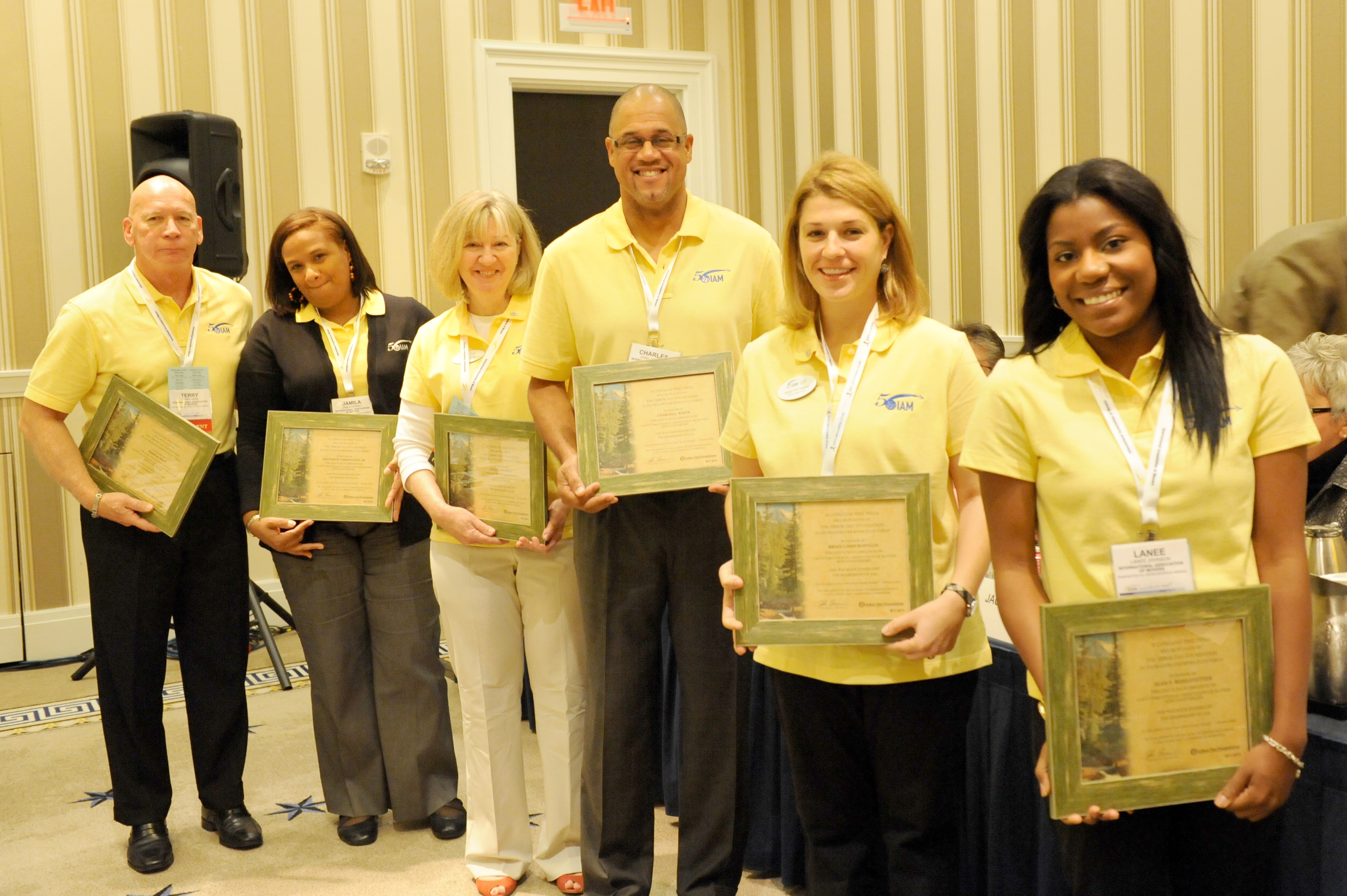The International Association of Movers (IAM), an evolution of the long-established Household Goods Forwarders Association of America (HHGFAA), came into existence in 2009. But what, exactly does the organisation do and why should any moving company consider becoming a member? Here, Steve Jordan chats to the organisation’s President, Terry Head, to find out.
 To change the name of an organisation that has become ubiquitous in its industry, worldwide, is a bold move. HHGFAA had been around since 1962. It was formed, as the name suggests, to serve the needs of the US forwarding industry, particularly those involved in the movement of US military household goods. But over the years the focus of the organisation changed. Now, with around 2,400 members in more than 170 countries, this is a truly global organisation involved in the whole international moving industry. A name change was inevitable.
To change the name of an organisation that has become ubiquitous in its industry, worldwide, is a bold move. HHGFAA had been around since 1962. It was formed, as the name suggests, to serve the needs of the US forwarding industry, particularly those involved in the movement of US military household goods. But over the years the focus of the organisation changed. Now, with around 2,400 members in more than 170 countries, this is a truly global organisation involved in the whole international moving industry. A name change was inevitable.
“But it was still an 11-year effort,” explained Terry. “It took a while because there were a number of people who didn’t buy into the name change. However, now the change has been made I believe it more accurately reflects the changing positioning of the Association.”
Organisation and membership categories
IAM has nine full-time employees directed by three separate Boards: the Executive Committee with 11 members; the Core Members Management Board, with two members from each of the seven global regions (two of which sit on the Executive Committee); and the IAM Young Professionals (IAM_YP) Management Board that has one representative from each of the seven regions (and one member on the Executive Committee).
The organisation has three corporate and three individual membership levels. The highest level of corporate membership is called Governing Membership. This was traditionally limited to those companies that had a history of moving US government and military personnel but has now been opened up to all members. Any company that has TGBL (Through Government Bill of Lading) responsibility for shipments (i.e., door to door) is required to have Governing Membership. To qualify for Governing Membership a company must be sponsored by two current IAM members and must wait out a 30-day probation during which time the IAM membership may object to their acceptance. Governing Membership does come with advantages, however: Most of the seats on the Executive Committee are occupied by Governing Members. They also receive three free Young Professionals (IAM-YP) memberships, an enhanced listing in the IAM directory (online and print) and they receive discounts on the cost of exhibiting and attending the annual conference.
Two further categories are Core Members, who form the majority of the membership worldwide, and Supplier Members, who are not movers but provide goods or services to the industry. All prospective IAM members are subject to the 30-day probation period.
IAM also offers three levels of individual membership: Young Professionals (IAM-YP) for people in the industry aged under 40 years; Student Membership that supports the organisation’s scholarship programme; and Industry Veterans for people who have retired from the industry, full or part-time, and want to stay in touch.
One of the projects that Terry says he is most proud of in recent years is the introduction of the IAM Young Professionals group, started back in 1999. “It was initiated by the members because the young people thought they would benefit from having an adjunct group,” he said. “I said let’s run with it and appointed an organising committee. It has been a great success.” Although IAM-YP was initially created as a networking group it has progressed far beyond that. “I see email traffic all the time between IAM-YP members. They are often shipping coordinators or customer service agents asking for advice or looking for groupage to supplement loads. It really contributes to global operational efficiency.”
 IAM Annual Conference
IAM Annual Conference
Terry said that, when surveyed, IAM members always say that the main benefit of membership is the company listing in the directory and the international business that ensues from it. That is, undoubtedly, an immediate and obvious benefit, but perhaps the most visible and iconic image of IAM is the annual conference: the best attended, most frantic, most exhausting, and arguably the most productive ‘must go’ event of the global mobility calendar.
Unlike some other industry conferences around the world, attendance at the IAM conference has held firm. Last year in Washington DC was the organisation’s 50th anniversary and attendance ballooned to a mind-boggling 2200 people. A more realistic figure is around 1800 which is still a crazy number of movers to put into one hotel and let loose on each other. “Each year we try to switch between the west and east coast so we are not favouring any part of the globe,” Terry explained. “Historically our figures have always been higher when we are on the east coast but in recent years, with the increase in memberships we have seen in Asia, that trend is levelling out. Over the last few years we have seen around a 5% growth in attendance every year. We are hoping for the trend to continue in Vancouver this year.”
Vancouver in 2013 will be the first time for a while that IAM has gone outside the USA. It’s not unprecedented: the Association has been to Germany, the Bahamas and Puerto Rico in the past. “This is our first time in Canada,” said Terry. “We see it as a possible stepping stone to holding a meeting overseas in the next 4-5 years. We have looked at possible venues in Europe, the Middle East and Asia but no decisions have been made. About two-thirds of our attendees every year come from outside the US so it doesn’t matter to them where they fly. We have been encouraged by our members to take the annual meeting offshore. If we do I would expect it to be on a recurring basis maybe every 4-5 years.”
IAM-YP also has its own conference within the conference. They have their own business sessions and social events and a little healthy sporting competition: a soccer tournament last year.
Behind the scenes
 Everyone knows about the membership directory and the conference. But it’s what Terry and his team get up the rest of the time that shows some of the more important yet less obvious benefits of IAM membership.
Everyone knows about the membership directory and the conference. But it’s what Terry and his team get up the rest of the time that shows some of the more important yet less obvious benefits of IAM membership.
One key function, for example, is to build strong relationships with government organisations: The Federal Maritime Commission (FMC) for international work; the Federal Motor Carriers Safety Administration for domestic operations; Customs and Border Protection (CBP), the Food and Drug Administration, and the Department of Agriculture to smooth the passage of imports. To achieve all it does, IAM works closely with other organisations such as AMSA (American Moving and Storage Association) and FEDEMAC in Europe, that have a similar brief on matters at a federal level within their respective countries and communities. “There is no question about it; we have had greater emphasis, success and face-to-face discussions with these agencies over the last few years. I think one of the things that facilitated that was our name change. We are now seen as a representative body of the global moving industry in the US. Our lobbyists stay in touch with what’s moving through our US Congress that may impact our industry. So we have an early warning. We also work at that level to try to get things into legislation that may help us or minimise any detrimental effect of agency decisions.”
One example of this work is the battle IAM is fighting to try to expose what it considers to be ‘rogue movers.’ It is very easy to put up a professional-looking website and suck in unaware customers with the intention of stealing from them. “We recently introduced the ‘red flag’ campaign to protect consumers,” said Terry, referring to the consumer protection initiative operated through the Federal Motor Carrier Safety Administration (FMSCA). “This has become a big part of our focus and will be a bigger part in the future, as we redesign the IAM website. We hope to educate the consumers, people who buy moving services, as to what to look out for so they don’t wind up with these rogues and so they work only with a professional mover.” IAM worked with AMSA and the US State Associations to make this happen through the National Council of Moving Associations. The ‘red flag’ campaign does due diligence on companies, finding what’s behind the good-looking website, checks on whether they have people go out to visit customers or just quote over the phone and provides a number of tips for consumers.
IAM has been working with FMC and other agencies for many years but Terry feels it has had more success in the last two years than in the 20 years before. “They are listening to us,” he explained. “We have quarterly meetings with Customs and Border Protection and have programmes in the development stage so I think we have had great success in developing closer working relationships, not just lines of communication but actually identifying and working on programmes and initiatives that are going to be of benefit to our industry. One of the things we are pleased to see the FMC has done is to develop a complaint resolution process. Also we have been working with the FMC to work out who in our industry really needs to be regulated. Who should be required to have an FMC license? What is a freight forwarder or an NVO (Non-Vessel Operator)? We have worked closely with them to help educate our industry and its consumers as to what those rules are.”
One of the subjects at the top of the IAM agenda is the impact of delay of clearing and delivering shipments, and the claims for loss and damage that result from physical examinations. “It’s one thing to have a shipment selected for an X-ray examination but something quite different to have it selected for a full physical examination by unskilled labour. It’s an art to get everything back into a container safely. We are not going to stop the authorities from wanting to examine containers but we are working on helping them train their staff to do it properly and, eventually perhaps, to have approved movers do it for them.”
IAM is also working on trying to get a subset of the C-TPAT programme (trusted trader programme) for the household goods sector. Just recently a Commercial Operations Activities Council has established a sub-committee to look at sub-sets of the trusted trader programme. “We have been working on that for about a year with the intention of getting them to fully appreciate the nuances of the household goods business,” said Terry. “If we can achieve this it will make a huge difference on the loss and damage side. If we can get to the point where we can establish standards and criteria to allow a company to become ‘certified’ under the trusted trader programme, the customs department is less likely to choose that company’s containers for a physical examination.”
Financial protection between members
 Financial protection between members is a particularly hot topic at the moment, especially with the changes to the FIDI/FAIM financial requirements. It is a problem with which associations the world over have wrestled for years. IAM provides a degree of protection from its own resources, however it is trying to protect 2400 members in over 170 countries; it’s a mammoth task. “We represent a wide spectrum of companies from the very small to the very large, so our exposure is quite high,” Terry explained. “Our Receivable Protection Programme (RPP) has three components: member companies are protected to get at least some of their money back if another member ceases to operate; we have a slow players list to provide advance notice that member companies are slowing down in paying their bills; and we have an arbitration or dispute resolution programme for when there are disputes about payment.” At present the RPP programme is voluntary and members pay additionally to take part. Terry admits that should it become mandatory, the programme would need to be outsourced to an insurance organisation with all the difficulties of risk-assessment that that implies. That’s when it gets complicated.
Financial protection between members is a particularly hot topic at the moment, especially with the changes to the FIDI/FAIM financial requirements. It is a problem with which associations the world over have wrestled for years. IAM provides a degree of protection from its own resources, however it is trying to protect 2400 members in over 170 countries; it’s a mammoth task. “We represent a wide spectrum of companies from the very small to the very large, so our exposure is quite high,” Terry explained. “Our Receivable Protection Programme (RPP) has three components: member companies are protected to get at least some of their money back if another member ceases to operate; we have a slow players list to provide advance notice that member companies are slowing down in paying their bills; and we have an arbitration or dispute resolution programme for when there are disputes about payment.” At present the RPP programme is voluntary and members pay additionally to take part. Terry admits that should it become mandatory, the programme would need to be outsourced to an insurance organisation with all the difficulties of risk-assessment that that implies. That’s when it gets complicated.
Passing off
Most trade organisations have a problem, to some degree or other, with passing off: companies that use the logo or imply membership of the organisation when they are not. This is both misleading to the public and undermines the position of those companies who do pay to be members. As the IAM brand has become better known more people want to attach themselves to it: some illegally. Terry says that it’s not a big problem but IAM takes very seriously any attempt at passing off and says that it is IAM’s own members that police the industry: every company knows its competitors and are quick to report any company that is showing an IAM logo illegally. “The first action is to contact the company and politely ask them to take down the reference. In most cases this is enough to solve the problem. If they persist they get a letter laying out what legal actions may follow. If that still doesn’t work we turn them in to the Federal Trade Commission. The legal option is very much a last resort and I think we have only had to do that in two cases.”
So, there’s much more to IAM than a directory and a conference; albeit a real monster of a conference. The organisation is involved in education, encouragement of future generations, global lobbying and much more. Its latest initiative is an IAM Logistics Network for existing members that have branched out to supply logistics services in the widest possible sense. More details of this will be revealed in Vancouver in October. IAM may be over 50 years old, but it’s not standing still. Keep watching, and if you are not a member already, why not consider becoming part of the global community of international moving through IAM. As always, you get out what you put in.
Photos:
Top: IAM President Terry Head
Centre: IAM Annual Meeting exhibit hall
IAM staff members, from left: Terry Head, President; Jamila Kenney, Operations Manager; Janet Seely, Director, Communications & Member Engagement; Chuck White, Director, Government & Military Relations; Julia O’Connor, Membership Manager; Lanee Johnson, Member Services Associate. (Not shown: Bel Carrington, General Manager; Brian Limperopulos, Programs Manager)
Click here to read the next Editor's pick